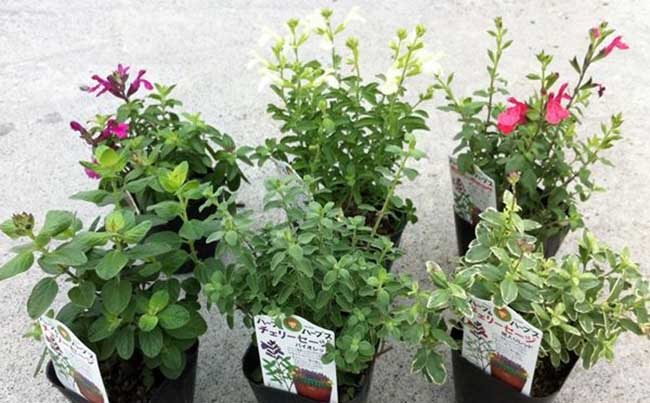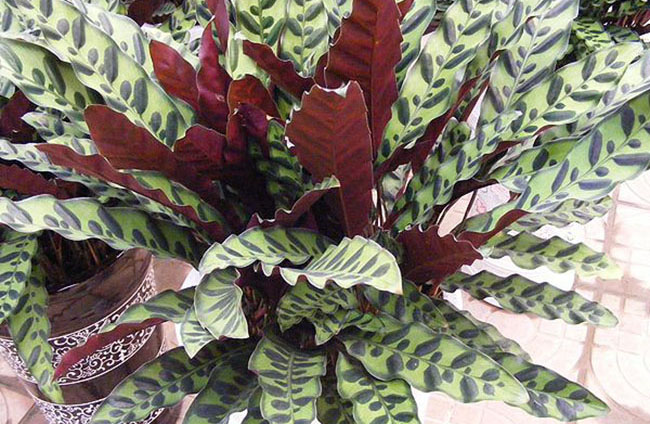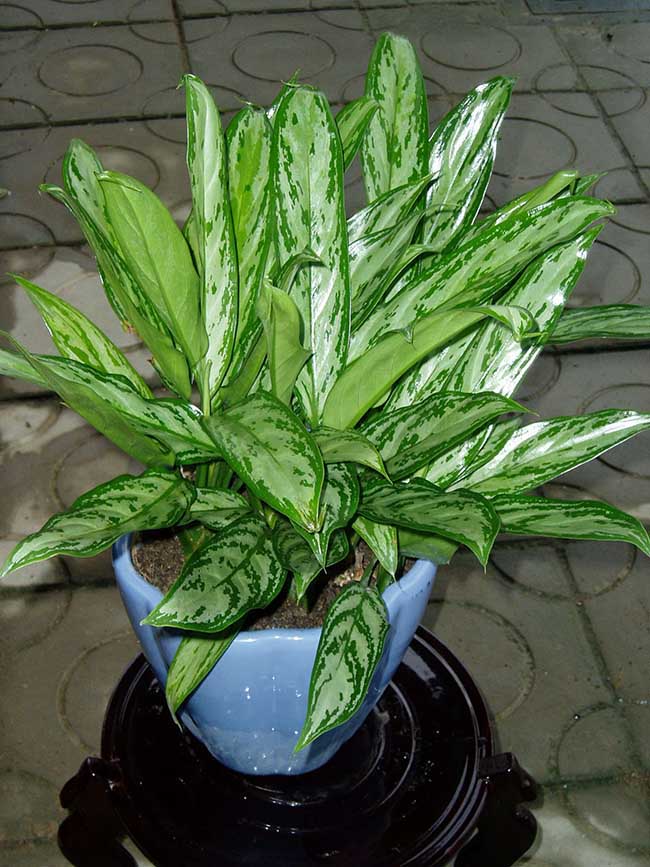Culture methods and propagation of sage
Growth environment of sage
Born on hillsides, roadsides, shady bushes, watersides and under trees, 22-1100 m above sea level. Like a warm, well-lit and well-ventilated environment. The suitable temperature for growth was 15 ℃-22 ℃. Resistant to drought, but not resistant to waterlogging. Do not choose soil, prefer calcareous soil, neutral or slightly alkaline soil with good drainage and loose soil.
Distribution range of sage
Originated in southern Europe and coastal areas of the Mediterranean. China mainly grows in Zhejiang, southern Anhui, Jiangsu, Jiangxi, Hubei, Fujian, Taiwan, Guangdong, Guangxi and other places; Japan also has distribution

Propagation method of sage
Sowing seeds
The seeds are usually sown in spring and autumn. The seedling period is from September of each year to April of the following year. Because of the hard shell of sage seeds, it is necessary to soak the seeds in warm water of about 40 ℃ at 24:00 before sowing, and the suitable temperature for seed germination is 20-25 ℃. Generally, seedlings emerge in 10-15 days, direct seeding or seedling transplanting. Direct seeding, 3-5 grains per hole. When the plant height is 5-10cm, the seedlings should be 20-30cm apart.
Cuttage
The South began in May-June and the Northern Reserve began in March. Cuttings were selected from the not-so-tender tip of the shoot, about 5-8cm long, cut off at the lower position of the stem node, 2-3 large leaves at the base, and half of the upper leaves (to reduce water evaporation), and inserted into the seedbed of sandy soil or perlite at a depth of 2.5-3cm. Watering after insertion, and covered with plastic film to moisturize, can be planted after growing new roots in 20-30 days, the seedbed requires sufficient light, the soil is moist and loose, and the survival rate of cutting seedlings is generally about 95%.
Cultivation and management of sage
Upper basin colonization
The matrix is loose and ventilated garden soil with organic fertilizer and compound fertilizer, or 7 parts of peat plus 3 parts of garden soil can be mixed with appropriate amount of ammonium fertilizer, and the soil can be planted in a nutrition bowl above caliber 10cm.
Fertilizer and water management
The effect is better when ammonium sulfate is diluted 1500 times during the growing period, and urea is not used at low temperature. In order to make the plant have strong root system and luxuriant branches and leaves, fertilizing once a half month during the growing period, potassium dihydrogen phosphate diluent can be sprayed to keep the basin soil moist, and phosphorus and potassium fertilizer should be applied once before flowering.
Temperature and light management
The temperature decreased to 18 ℃ after putting into the basin, and decreased to 15 ℃ after one month. If the temperature is below 15 ℃, the leaves will turn yellow or fall off; when the temperature is above 30 ℃, the flowers and leaves will be small and the plants will stop growing. The hot summer needs proper shading, and the seedling stage should strengthen the light to prevent overgrowth.
Plant shape finishing
When the plant grows 4 pairs of true leaves, it leaves 2 pairs of true leaves to pick the heart, promotes the lateral branch flower to remove the inflorescence, and can still branch and continue to blossom.
Field management
After growing up, the seedlings can grow again, increase the distance and grow more vigorously. After planting, the soil can be kept loose and there are no weeds in the field. The yield of fresh leaves was not high in the first year of planting, but increased gradually after the second year, and the fresh leaves were harvested before budding (fresh leaves can be extracted from aromatic oil or sold as a commodity after shade drying). The second harvest is around the middle of September, and the third harvest is before frost in late October, fertilizing and watering in time after each harvest. Overwintering mulch will be carried out after the third harvest in late October or early November to ensure next year's yield.
Control of diseases and insect pests of sage
The main diseases are leaf spot, blight, quenching, etc., which occur frequently in the seedling stage, and can be controlled with 50% methyl thiophanate wettable powder or 75% chlorothalonil and 500 times wet powder. The common insect pests are aphids, whiteflies, etc., which can be sprayed and killed.
The main value of sage
Edible
Leaves have the efficacy of sterilization, anti-detoxification, anti-plague and anti-epidemic, and can be eaten cold; stems, leaves and flowers can make tea to drink, purify the body oil, help circulation, beauty and beauty. It can also be eaten as an ingredient, but it is not suitable for long-term consumption (because it contains tribulone, long-term drinking in large quantities will produce toxins in the body).
Medicinal use
[medicinal part] the flowers and leaves are bitter, slightly cold and non-toxic. (Tibetan utensils say) flat
[functional indications] Rat fistula is cold and hot, dysentery and purulent blood. Those with white flowers are in charge of white, and those with red flowers are in red ("don't record"). Main Malaria Shuigu (Shizhen)
Other uses
Essential oils and their derivatives are used in daily flavors, and sage can be made into sachet.
Landscaping can be used as a potted plant for the layout of flower beds, flower borders and garden attractions. At the same time, it can decorate the open space beside the rock and the forest edge, appear quiet, put in front of the natural building and small courtyard, because of its strong adaptability, it can also be planted on the waterfront bank, and the group planting effect is very good. it is suitable for the arrangement of slopes on the forest edge of parks and scenic spots, corners of lawns and banks of rivers and lakes, not only greening the city but also smelling incense.
How to reproduce sage? the reproduction method / survival rate of sage is as high as 95%.
Sage is a kind of flower plant with high ornamental value, which can be seen in many areas of our country, but with more and more people raising sage, people are more concerned about its reproduction. About how sage propagates? What are the breeding methods of sage? Next, the editor will take you to learn about it.
1. How to propagate, sow / cut sage
When it comes to how to reproduce sage, in fact, it is mainly divided into two methods: sowing reproduction and cutting propagation. As long as we operate in accordance with the requirements, the survival rates of the two methods are very high. The specific operation details of these two breeding methods are shown below, which can be found out by interested friends.
Second, the propagation method of sage (sowing and propagation)
1. Matrix, good drainage.
Sowing reproduction is one of the most commonly used breeding methods of sage. Before we sow and propagate, we should first choose the substrate. Generally, it is best to choose loose and fertile neutral or slightly alkaline soil as the substrate, because this kind of soil has better drainage, can better absorb nutrients, and is not prone to stagnant water.
two。 Prompt hair, soak for 1-2 days
Because the seed shell of sage is relatively hard, it is best to soak it in warm water of about 40 ℃ before sowing for about 1-2 days. When the seed begins to absorb water and swell, take it out and plant it, which can promote it and make the seed germinate faster.
3. Sow seeds and emerge in 10-15 days
Before we sow and reproduce sage, we should first apply an appropriate amount of base fertilizer to the soil, then spread the seeds evenly on the soil surface, and then cover the soil with 1-2cm to water it. When watering, we should pay attention to watering thoroughly, and then the seedlings can emerge in about 10-15 days.
Third, the propagation method of sage (cutting propagation)
1. Cutting time, May-June in North / March in South
When we are cutting sage, it is very important to choose a good time, because cutting at an appropriate time can improve the survival rate. If it is in the south, we can choose May-June for cutting, while in the north, we can choose March.
two。 Choose cuttings and grow healthily.
In the cutting process of sage, the selection of cuttings is also a very important step. We had better choose branches that are relatively robust and disease-free, so that the survival rate will be very high. If we choose branches that look very small and delicate, then we can basically declare that the cutting failed, and the survival rate will not be very high.
3. Cutting method, rooting in 20-30 days
Among the propagation methods of sage, cutting propagation is a relatively simple one. Before cutting, we can first use chopsticks to cut a hole in the soil, and then insert the cuttings into the middle to flatten the soil for watering. When watering, we should pay attention to watering thoroughly, and wait for 20-30 days to grow new roots.
Culture methods of sage
Sage
Scientific name: salvia farinacea
Aliases: autumn Salvia miltiorrhiza, Radix Salviae Miltiorrhizae, Perilla leaves, Salvia officinalis, Salvia officinalis
Families and genera: Labiatae, Salvia.
Morphological characteristics:-biennial or perennial herbs and evergreen shrubs. The height of the plant is 30cm to 60cm. Much branched, leaves opposite, long oval, gray-green color, leaf surface with concave and convex texture, pungent and rich fragrance, flowers are light blue or purple, sometimes white or light red. Seeds subellipsoid.
Ecological habits: like sunny or semi-overcast environment. It is more hardy. Can stand a low temperature of one 15 degrees Celsius. Like sandy loam with good drainage, prefer fertilizer, and have strong drought resistance.
Cultivation management: seed propagation or cutting propagation can be used. Seeds can be sowed from February to August, and sown in four seasons in greenhouse. Before sowing, soak the seeds in 50 degrees Celsius warm water and stir them for 5 minutes. when the temperature drops to 30 degrees Celsius, rinse with clean water several times, then put them in a constant temperature to accelerate germination, or soak them in water for another 24 hours before sowing. Direct seeding or seedling transplanting was used. The cutting time is from May to June, the stem tip at the top of the branch should be 5-8 cm long, cut at the lower position of the stem node, 2-4 large leaves should be removed, and then inserted into sandy soil or perlite, with a depth of 2.5-4 cm, plant spacing of 5 cm × (8~l0) cm, watering after cutting and covered with film heat preservation, new roots can be produced in 20-30 days, and seedlings can be transplanted and planted after 3 days. Deep ploughing fine rake before planting, the barren soil can be applied 2000 kg organic fertilizer per mu to form a wide l.2~l.5m border, which is planted according to the plant row spacing of 30 cm × (45 cm 50) cm, and watered after planting. Choose pots with a diameter of more than 18 cm, one for each pot. When the seedlings survive, pay attention to weeding frequently, watering in drought, especially in hot summer, apply a small amount of compound fertilizer while watering, and drain in time in rainy days. The north needs to prevent the cold and survive the winter. the method adopted is: after the upper part is harvested, pour frozen water and cultivate the soil, the soil thickness is 20 centimeters or more, and after the final frost of the next year, dig the soil and water it to facilitate germination and growth.
- Prev

Culture methods and Disease and Pest Control of Cat's Eye Taro
Cat's eye bamboo taro growth habits like warm, humid and bright environment, not cold-resistant, not drought-resistant, afraid of hot sun exposure, the growth period should be fully watered to keep moist, but the soil should not be stagnant water, it is appropriate to use loose and fertile soil with good drainage and permeability, and slightly acidic soil rich in humus.
- Next

Matters needing attention in the breeding method of evergreen, Queen of Silver
Silver queen evergreen silver queen, also known as silver queen evergreen, silver queen thick rib grass, silver queen bright silk grass. The leaf color is beautiful, especially shade-resistant, and has a unique ability to purify the air. Decorating potted plants in the hall, you will feel bright and comfortable. At present, it is fashionable to cut leaves and arrange flowers for leisure or decorate the outdoor environment. In addition to watching and purifying the air
Related
- Fuxing push coffee new agricultural production and marketing class: lack of small-scale processing plants
- Jujube rice field leisure farm deep ploughing Yilan for five years to create a space for organic food and play
- Nongyu Farm-A trial of organic papaya for brave women with advanced technology
- Four points for attention in the prevention and control of diseases and insect pests of edible fungi
- How to add nutrient solution to Edible Fungi
- Is there any good way to control edible fungus mites?
- Open Inoculation Technology of Edible Fungi
- Is there any clever way to use fertilizer for edible fungus in winter?
- What agents are used to kill the pathogens of edible fungi in the mushroom shed?
- Rapid drying of Edible Fungi

